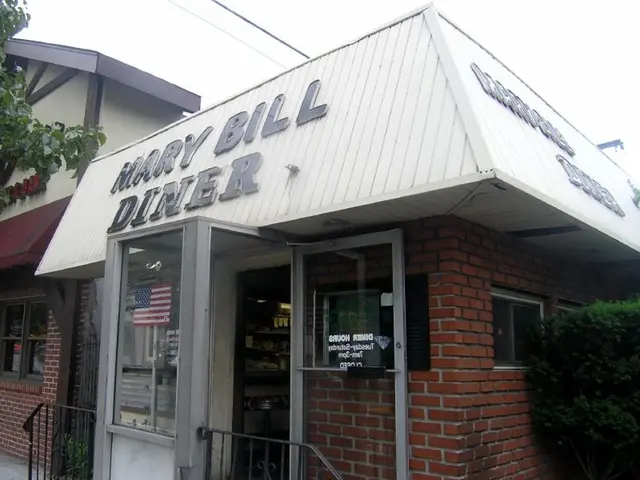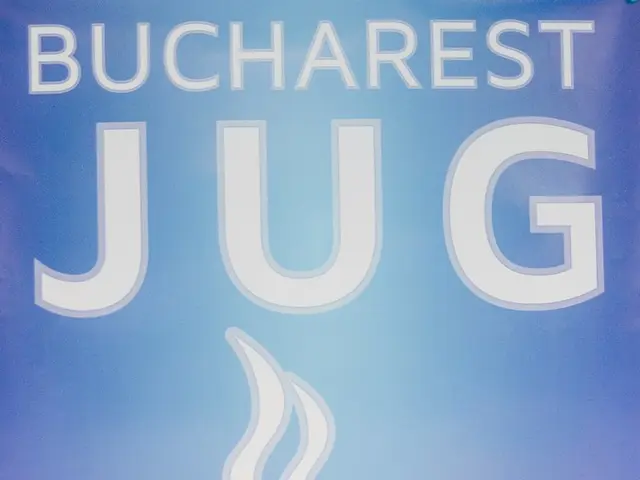Refreshing Old Kitchen Units: The Advantage of Repainting Cabinets for Cost Savings
Achieving a Long-Lasting Finish on Kitchen Cabinets
Painting kitchen cabinets can be a rewarding home improvement project, but ensuring a durable, long-lasting finish requires careful preparation and the use of appropriate materials. Here's a step-by-step guide to achieving a high-quality result.
Preparation
- Start by removing everything from your cupboards, dusting away any loose dust or dirt, and laying drop cloths over floors and surfaces.
- Sand the cabinets lightly with 120-grit sandpaper to roughen the surface for better adhesion, especially important for laminate cabinets. Be sure not to sand through the thin laminate layer.
- Clean the cupboards with a sugar soap solution and warm water to disinfect the surfaces, removing dirt, grime, and grease.
Priming
- Use a bonding primer that adheres well to challenging surfaces. For laminate, Zinsser Interior Primer or Zinsser Bin Advanced Shellac primer (especially for wood doors) are recommended to block stains and seal the surface.
Paint Type
- Opt for oil-based paints for durability and a smooth finish, resisting wear and moisture better. Water-based acrylic latex paints are easier to clean and have less odor/toxic fumes but may not be quite as hard-wearing as oil-based options.
Painting Technique
- Apply multiple thin coats rather than one thick coat for a smoother, more durable finish. Lightly sand between coats with fine-grit sandpaper to increase adhesion of subsequent layers.
Finishing
- Consider applying a clear protective topcoat (such as polyurethane for oil-based paints or a water-based clear coat) to add extra durability and shine.
- Properly reattach hardware and ensure alignment for cabinet doors to prevent damage to the paint.
Key Techniques and Materials
- Use masking tape or blue painters tape to tape down the edges of the covers. Tape any edges that need covering. Also, cover the floors with dust sheets and tape up to kickboards (if needed).
- Apply tape around the perimeter of the cabinets to protect the countertops, walls, and backsplash areas.
- Use a high-performance wood filler to fill dents and handle holes.
- Use an oil-based primer or a quick-drying primer, and gently rub down with fine-grit sandpaper after it dries.
Summary
| Step | Recommended Approach | Notes | |------------------|-------------------------------------------------------|-----------------------------------------------------| | Preparation | Sand with 120-grit, clean with degreaser | Especially necessary for laminate cabinets | | Primer | Zinsser Bin Shellac primer or Zinsser Interior Primer | Essential for bonding and stain blocking | | Paint | Oil-based or high-quality water-based acrylic paint | Oil-based typically more durable | | Finish | Semi-gloss or gloss | Easier to clean, more durable | | Protective coat | Optional clear polyurethane or water-based topcoat | Adds longevity and protection |
Following this process ensures a durable, long-lasting finish resistant to kitchen wear, moisture, and frequent cleaning. Avoid shortcuts like skipping sanding or primer unless using specifically formulated all-in-one products designed for cabinets, keeping in mind that these may sacrifice finish durability.
Regardless of the type of kitchen units (solid wood, veneer, or laminate), a primer followed by the right type of paint is necessary. For a longer-lasting and good-looking finish, use a specialist kitchen cabinet paint with the desired finish (gloss, semi-gloss, or satin). Don't forget to paint kickboards, as they take more knocks than the average cupboard door and should receive an extra coat of paint.
Brushes, mini roller and roller tray, dust sheets, sandpaper, painter tape or masking tape, cloth and bowl, sugar soap solution, overalls, primer, and the chosen paint color are necessary tools for painting kitchen cabinets. A durable, long-lasting painting formulated for exterior use is an ideal choice for tough jobs. When designing a kitchen, the choice of color is crucial.
- To ensure a durable finish on kitchen cabinets, begin by preparatory steps such as sanding, cleaning, and covering surrounding areas with drop cloths and masking tape.
- Choose appropriate primers like Zinsser Interior Primer or Zinsser Bin Shellac for better adhesion, especially for laminate cabinets.
- Opt for oil-based or high-quality water-based acrylic paint for a smoother, long-lasting finish that resists wear and moisture.
- Apply multiple thin coats of paint and lightly sand between each for a smooth and durable finish. Consider adding a clear protective topcoat for extra durability and shine.
- After painting, properly reattach hardware and ensure alignment to prevent damage to the paint.
- When designing a kitchen, consider the lifestyle and home-and-garden guide for ideal color choices, and gather necessary tools like brushes, mini roller, roller tray, sandpaper, painter tape or masking tape, cloth, sugar soap solution, overalls, primer, paint, and dust sheets before starting the project.




